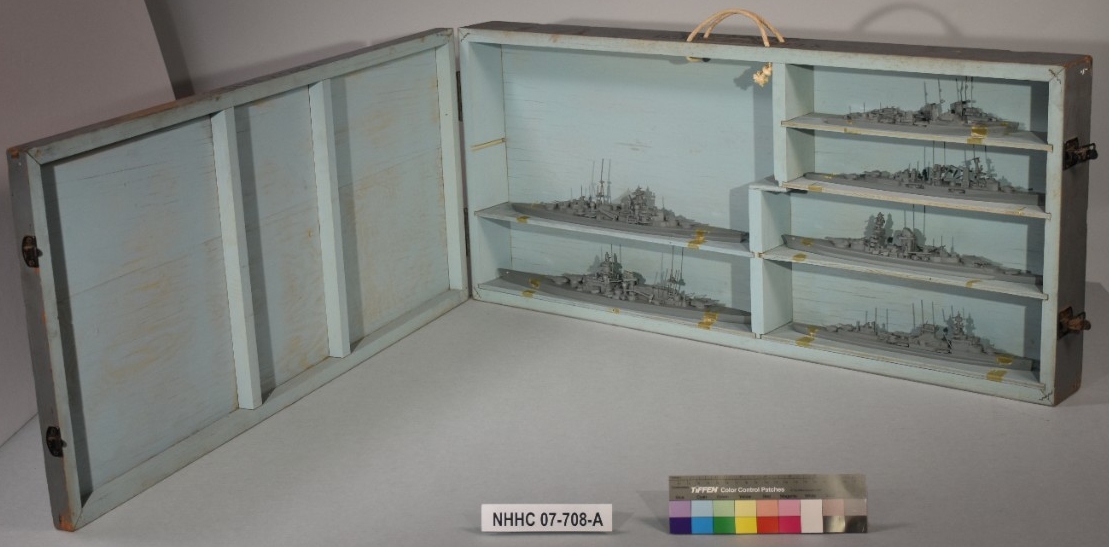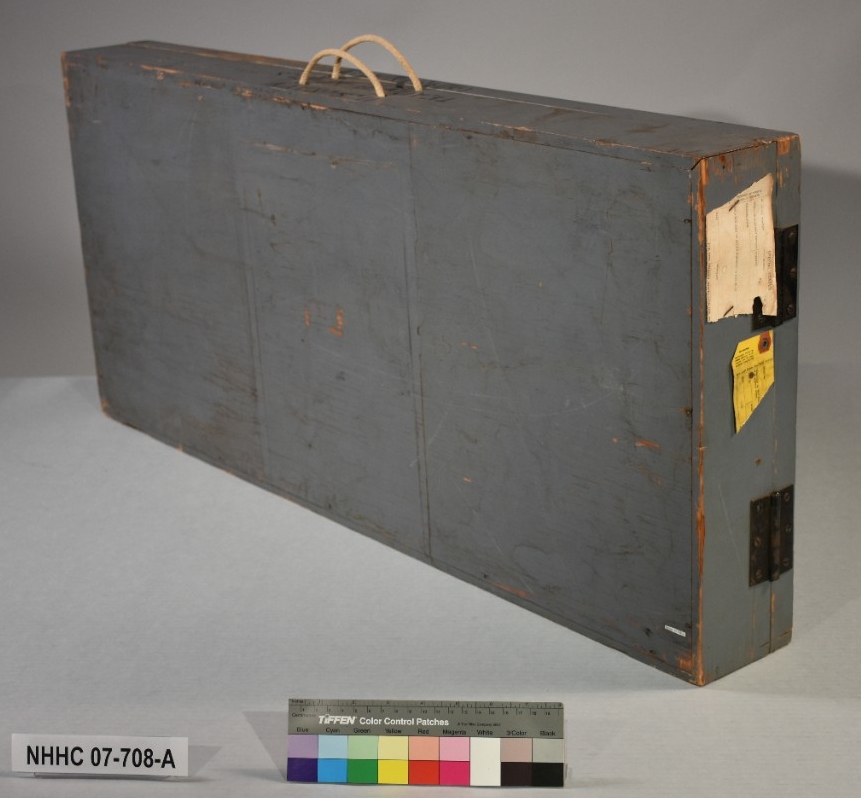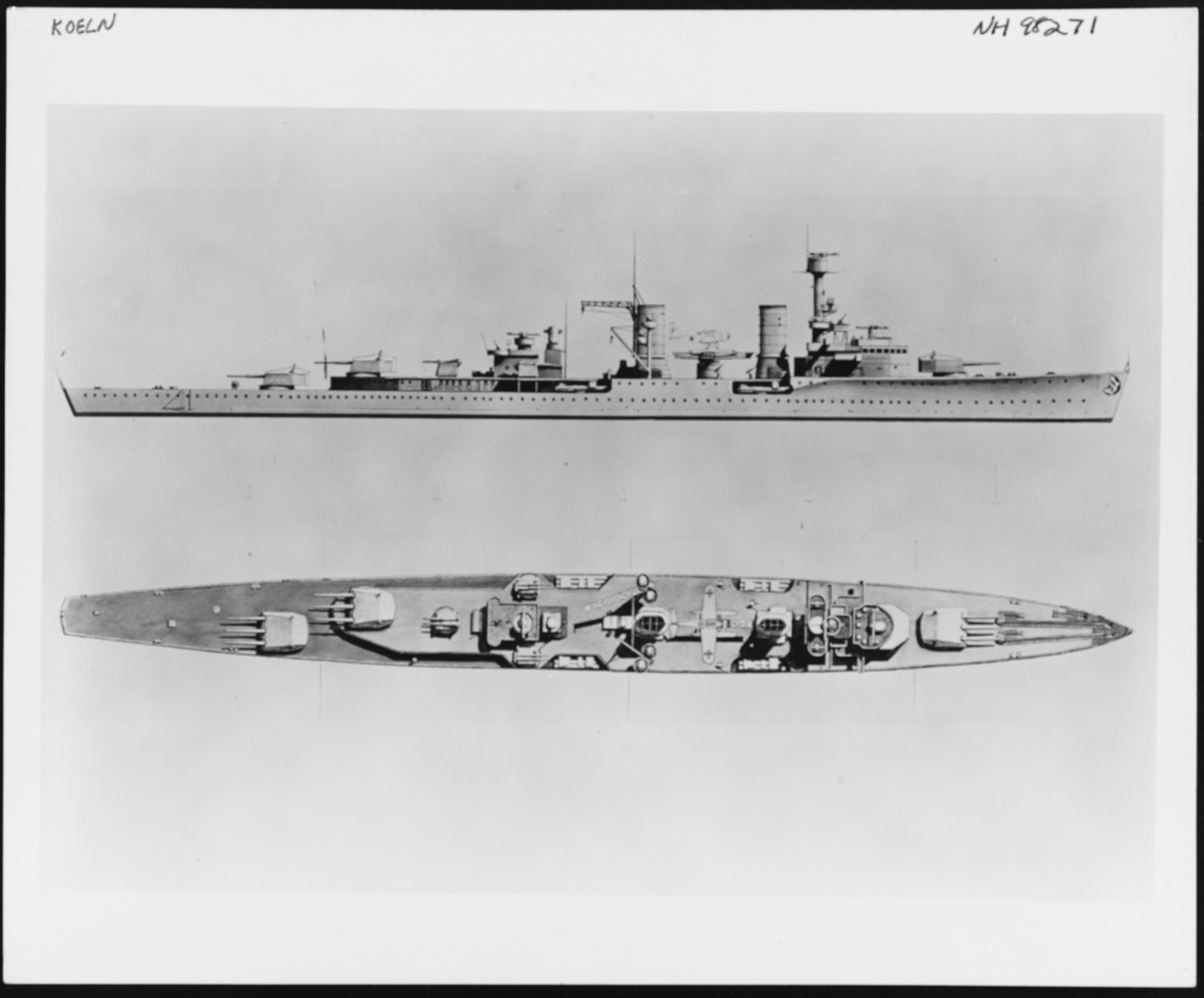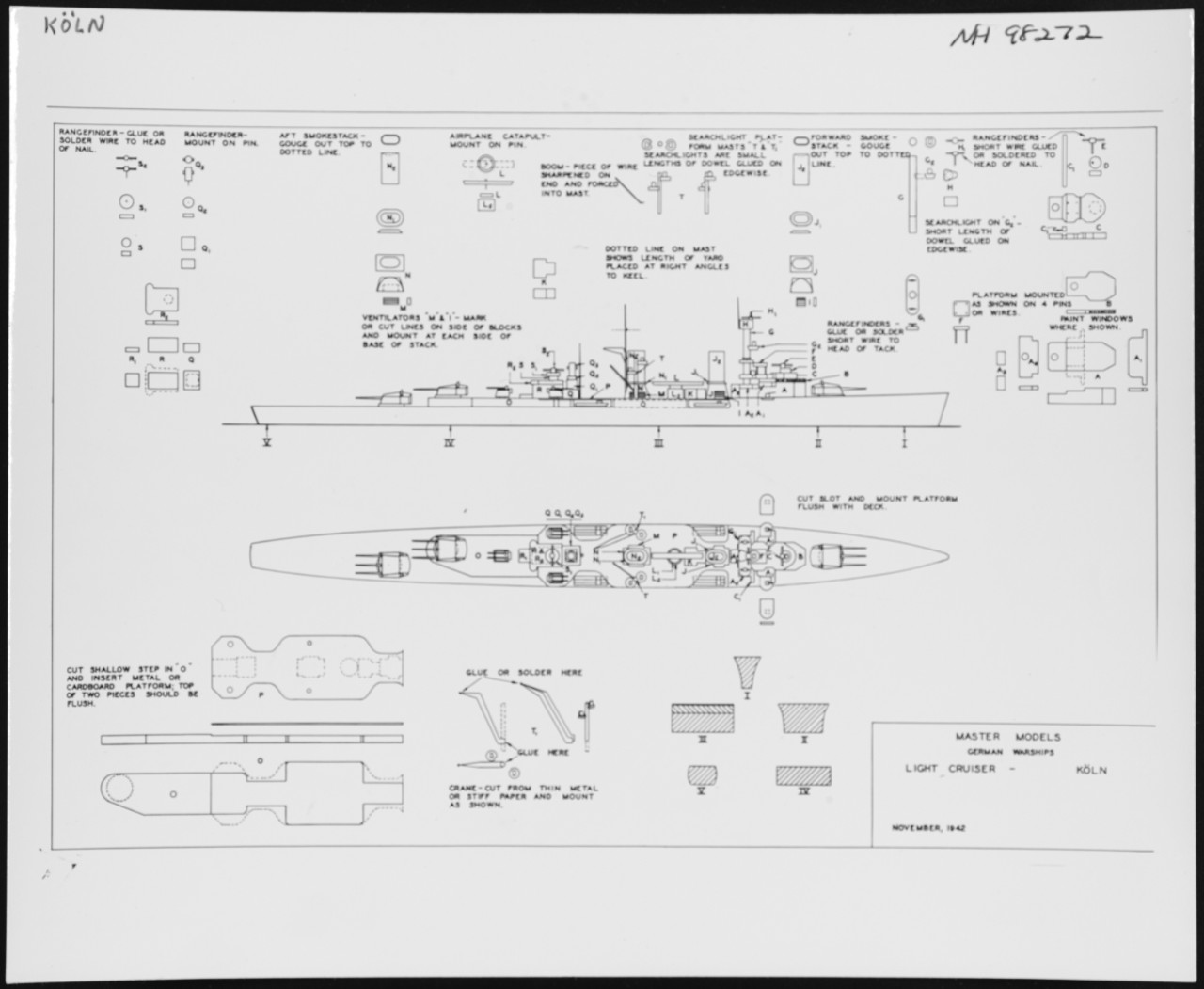Manufactured By Comet Metal Products CO., Inc. - Richmond Hill, N. Y

Title: World War II-era German Ship Models and case
Accession #: NHHC 07-708-A
Circa: World War II
Size: 1:1200
Medium: Lead, Wood
Location: Headquarters Artifact Collection, Naval History and Heritage Command
Miniature ship model-making began as a hobby largely centered in Germany and England. By the early 20th century, the practice had expanded and evolved, with skilled model makers working to produce scaled replicas of the many commercial ships plying the seas at the time. When acquiring plans from foreign ship builders, local model makers contended with alterations taking place between planning and ship-building stages, both incidental and deliberate, due to financial or practical reasons. These deviations in the plans, were known to cause slight differences between a ship’s construction and the associated ship model, where model makers were not able to view such changes and alter their models accordingly.
The hobby soon became serious business, as a tool in helping nations’ militaries to identify both friendly and enemy ships, as well as merchant ships across flotilla.
War Departments quickly adopted model-making as an important tool, where accurately scaled three-dimensional models replaced the use of silhouetted illustrations taken from books.
By the start of World War I, the US Navy began contracting with model makers to provide detailed models of foreign vessels at a scale of 1:1200.
Once an elementary tool, increasingly refined ship model-making provided accurate representations of most ships at sea by World War II.
The models of this era were predominantly three-dimensional, on a small scale, and shown from the waterline up to make it more practical to identify ships, day or night, from a great distance.
Thousands of models were produced for display in War College and Naval Academy classrooms, in addition to US Naval ships, and bases. While some display cases were transportable, others were attached to bulkheads for fixed display. Typically, case arrangements displayed multiple ships from one country’s military, though some displays also featured commercial and passenger ships.
Modern technology has largely made physical models obsolete. With satellite imagery and aircraft surveillance, nations can monitor foreign ship building activities and subsequently utilize computer-based 3-D modelling technology.

This hand-made plywood display case is painted blue gray, and when stood upright swings open similar to a book. Two short clothesline style ropes, side by side, are used as a carrying handle. Both are attached to the backside by way of being passed through an opening on top and secured with knots underneath. A stencil, centered on the top front edge, in between the rope handles, reads in black ink: "U.S. NAVY / TEACHER MODELS / GERMAN NAVY." A yellowed, off-white partial label is attached with two staples to the rear of the left side edge, covering part of the top hinge. It is entitled "SPECIAL STATUS." A warning label, yellow in color, is attached below it with two small nails.

Inside the display case, seven German ship models made from lead are affixed by screws to six pull out shelves. One of the shelves displays two smaller ships, and the remaining five shelves each display one ship. The models represent World War II-era German ships, and each model represents a different class for a total of seven classes. Each shelf features a stenciled label underneath noting the class of ship represented, as well as the manufacturer's name. They are as follows: Scharnhorst, Prinz Eugen, Maasz, Narvik, Admiral Scheer, and the last two, with the correct German spelling afterwards, are: Koeln (Koln), and Nuernberg (Nurnberg). Stenciled on the underside of each model's shelf: "MFG. BY COMET METAL PRODUCTS CO., Inc. / RICHMOND HILL, N. Y."




